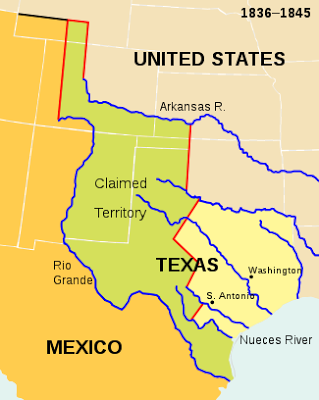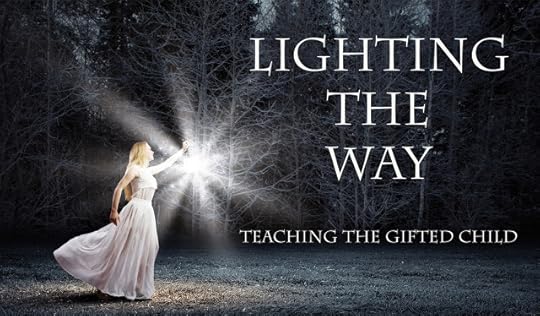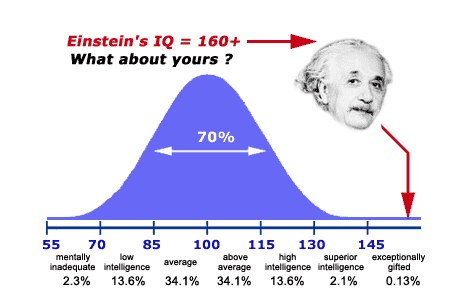Allison Bruning's Blog, page 12
June 30, 2015
#SupernaturalTexas: Fort Davis Buffalo Soldiers

Supernatural Texas: Fort Davis
Welcome back to Supernatural Texas. Last week I introduced you to the four regions of Texas. The Lady of Wild Rose Pass , book 1 of my Espíritu de Tejas short story series, takes place in the Big Bend Region of West Texas between Fort Davis and Balmorhea, Texas.
Fort Davis, Texas is a small town located deep within the Davis Mountains with a rich Texas history. The story of Fort Davis, Texas begins with the Texans fight for Independence.
Texas won their independence after Sam Houston defeated Santa Anna at the Battle of San Jacinto on April 21, 1836. General Santa Anna, the Mexican dictator, was forced to sign a peace treaty with the Texans recognizing their claim of sovereignty. Soon afterwards, Great Britain, France and the United States recognized the new nation of Texas. All three nations warned Mexico not to go to war with the Texans. The Republic of Texas was much larger than the present day Texas.

The Mexican government did not quietly accept defeat for very long.
During the 1850's hundreds of families and adventurers wanting to strike it rich in the California Gold Rush descended upon the western portions of the United States. The main route to California went through mountains and areas where there were plenty of snow. Travelers who wanted to come west during the winter months needed a different route to take in order to avoid the hazards of snow and ice. In 1849, the United States established the San Antonio - El Paso Road that connected central and west Texas. Travel along the route was dangerous because the Comanches, Kiowas and Mescalero- Apaches would frequently attack anyone who travelled on the road. The Comanches and Apaches each had their own trails leading from their raid routes in Mexico to the San Antonio - El Paso Road. The frequency of the Comanche and Apache raids on travelers demanded the United States provide more protection for settlers.
During the 1850's the United States Army established several forts along the trade routes in order to provide a consistent military presence throughout Texas. Fort Davis was established in October of 1854. The Comanches and Apaches continued to raid travelers until the Civil War. Fort Davis was abandoned by the US Army at the beginning of the Civil War. In 1861, the Confederate Army reclaimed the western fort under the leadership of Col. John R. Baylor. The Confederate Army used their position to try to claim New Mexico as confederate territory. Their efforts failed. A year later they abandoned the fort and retreated to San Antonio. Fort Davis laid abandoned for the next five years. During this time, the Comanches and Apaches salvaged any wood they could find from the site for firewood.
The United States Army returned to Fort Davis in June of 1867 where under the direction of Lt. Col. Wesley Merritt the military began constructing a new post. More buildings and facilities were added to the land in order to accommodate 600 men, officers and their families. From 1867 - 1885, Fort Davis was used primarily as the post for the ninth and tenth United States Calvary units. These units were comprised of black soldiers known as Buffalo Soldiers. Their main purpose was to fight the Comanches and Apaches. These units were very successful in their military exploits against the native populations.
Fort Davis was abandoned in 1891.
Published on June 30, 2015 11:47
June 29, 2015
#LTW: The #Gifted Human Brain - It's all Biology

Welcome back to Lighting the Way. Last week we learned some gifted children are misdiagnosed because they do not exhibit characteristics that are often believed to be a part a gifted person's personality nor intellect. The main problem when trying to define who is gifted and who is not is that not all gifted exhibit the same quirks. Much of what we know today about the gifted population has been learned through brain research.

Inside the Gifted MindThe gifted mind is a very complex organ that has intrigued scholars throughout history. Mrazik and Dombrowski (2010) stated through much of history, scholars had believed a person’s intellectual ability was determined by their brain size. Educators and researchers have learned much about how the gifted brain works through current brain research.
The Cerebral CortexNIH Director Elias A. Zerhouni, MD (Asher, 2006) found IQ is not linked to the size of a person’s brain but how fast the cerebral cortex develops. The cerebral cortex is the outer layer of a human brain that contains folded grey matter. The folded grey matter can be divided into four functional parts known as the temporal, frontal, occipital and parietal lobes. Zerhouni (Asher, 2006) found the cerebral cortex of students with superior IQ’s (130 and above) thickens more rapidly than their non-gifted peers. The relationship between a student’s IQ and the rapidly growing cerebral cortex varies with age, especially in the prefrontal cortex.
Prefrontal CortexThe prefrontal cortex is the part of the cerebral cortex that covers the frontal lobe, which is located directly behind the forehead. Bruning, Shaw & Norby (2011) stated the frontal lobe is associated with executive regulation of learning, regulations of emotions and long-term memory functions. Zerhouni (Asher, 2006) found students with superior IQ’s may have prolonged thickening in the prefrontal cortex at an early age that allows for their early abstract reasoning, planning and other executive learning capabilities. Gifted children do not keep these abilities for long in their youth. Zerhouni (Asher, 2006) found gifted children’s cerebral cortex go through a thinning process that eliminates unused brain cells, neurons and any connections they could have made. Bruning, Shaw & Norby (2011) describe the brain’s process of discarding unused neurons as pruning. The pruning process continues in gifted children’s brains until the brain becomes more efficient during the teen years.
ReferencesAsher, J. (2006) Cortex Matures Faster in Youth with Highest IQ. Retrieved from National Institute of Health website: http://www.nimh.nih.gov/news/science-news/2006/cortex-matures-faster-in-youth-with-highest-iq.shtmlBruning, R. H., Schraw, G. J., & Norby, M. M. (2011). Cognitive psychology and instruction (5th ed.). Boston, MA: Pearson.Butnik, S (May/June 2013). Understanding, Diagnosing and Coping with Slow Processing Speed.Retrieved from http://www.davidsongifted.org/db/Arti..., J. (2009). The Brain at School: Educational Neuroscience in the Classroom. Retrieved from ttps://books.google.com/books?id=jwNFBgAAQBA..., G. (2013, October 21). Who is the gifted Child [Web log post]? Retrieved from http://www.huffingtonpost.com/dr-gail... Education, Inc. (Executive Producer). (2012). Anatomy of the brain. Baltimore, MD: AuthorLaureate Education, Inc. (Executive Producer). (2012). Connectivism learning theory.Baltimore MD: Author.Monru, J. (2013). High-Ability Learning and Brain Processes:How Neuroscience can help us to understand how gifted and talented students learn and the implication for teaching. Paper presented a the Research Conference, AustraliaMrazik, M., & Dombrowski, S. C. (2010). The Neurobiological Foundations of Giftedness. Roeper Review, 32(4), 224-234. doi:10.1080/02783193.2010.508154Sword, L. (2011). I think in pictures, you teach in words: The gifted visual-spatial learner. Tall Poppies Retrieved from http://www.giftedchildren.org.nz/national/article4.php Treffinger, D (Ed.). (2003). Creativity and Giftedness. Thousand Oaks, CA: Corwin Press.
Published on June 29, 2015 14:00
June 28, 2015
#WUWA: Small Blessings

Small Blessings It's been a busy week for me. I spent the majority of this past week Spring Cleaning our little apartment. Normally, I don't spend quite that much time cleaning. I tend to keep my house cleaning and still be able to stay on task by following the Fly Lady routines. I discovered her website years ago. Her routines and cleaning schedule has been a huge blessing for me. Unfortunately, I ended up ignoring my Fly Lady routines for almost a year and my house ended up needing a detailed Spring Cleaning. I'll be so grateful when that's over. I'm not quite finished with it yet. I still have the office and living room to do and then I will be done. Once everything is complete my house will be easier to manage.
 This past weekend, I was truly blessed. My husband and I visited several yard sales on Saturday with the goal of obtaining organizers to help with the organization of our home. We love to go yard sales. You can find some of the nicest stuff at great prices if you know where and how to look. We were at a yard sale when I saw a wicker baby buggy with a note inside. The note said FREE. Well I couldn't pass that up. It's perfect for all my childhood stuffed animals. The buggy just needs some tender loving care. The couple said they had bought it years ago at a yard sale in Georgia. They had carried it around with them for a very long time and no longer needed it. It still has the original fabric and pillows inside it. It won't be that hard to fix.
This past weekend, I was truly blessed. My husband and I visited several yard sales on Saturday with the goal of obtaining organizers to help with the organization of our home. We love to go yard sales. You can find some of the nicest stuff at great prices if you know where and how to look. We were at a yard sale when I saw a wicker baby buggy with a note inside. The note said FREE. Well I couldn't pass that up. It's perfect for all my childhood stuffed animals. The buggy just needs some tender loving care. The couple said they had bought it years ago at a yard sale in Georgia. They had carried it around with them for a very long time and no longer needed it. It still has the original fabric and pillows inside it. It won't be that hard to fix.
Published on June 28, 2015 11:44
June 25, 2015
#ExpressYourself: Catching up with Allison

Welcome back to the Express Yourself weekly meme. I'm catching up this month with my weekly meme so there will be more than one topic of discussion on this post. This month we were asked the following questions.

June 1 - 5:
Q: Pick one of your 5 senses you find the most important.
A: The most important sense to me is sight. I am a very visually oriented person. I love anything to do with the arts. I love to read and write. I also like to explore the world around me. Humans depend upon their sight for so many things but most of the time we take that for granted. I learned not to take my vision for granted when I was child. I have a serious astigmatism that developed very quickly when I was a girl. It was hard to hide how thick my eyeglasses from when I was a child through my teenage years. Just look how thick and large those glasses are!

I'm so grateful that we now have the technology that will allow me to wear thinner lenses.
June 8 - 12:
Q: You have 30 seconds to change your whole name. What is it?
A: Annabella Elisabeth McCord
June 15 - 19
Q: You've been blindfolded and taken to a secret place. The blindfold has been removed. Where are you?
A: If I tell you then it won't be a secret. Darn it. I had it all set up so I could disappear from the world and get some things done. Fine! I guess I have no choice in the matter. I own a top secret time machine that allows me the capability to travel back into an alternative universe where all the characters of my books live. Ha! You only thought I wrote fiction. You didn't know it was real in an alternative universe. DID YOU? I'm in 1774 with Calico and Little Owl. AND NO YOU CAN'T BORROW MY MACHINE! IT'S MINE! ALL MINE!
June 22 - 26
Q: If you could learn one out of the norm skill. What would it be?
A: I want to learn how to ride on the back of a dragon. Seriously, who doesn't want to ride on the back of a dragon? Anybody have a dragon I can borrow?
Published on June 25, 2015 09:20
#SupernaturalTexas: #Texas regions.

Ranches, Rodeos, Cowboys and the Supernatural?
Welcome to the first post in my Supernatural Texas series. This series is based on the adventures of Dalton and Tasha. Dalton and Tasha are the main characters of my Espíritu de Tejas short story series. The first story in the series, The Lady of Wild Rose Pass, takes place in Wild Rose Pass, which is located between Balmorhea and Fort Davis, Texas.
Typically when an outsider thinks of Texas the first image they conjure is that of the desert. But that's not what all of Texas looks like. Texas has four regions with different geographical landscapes, climate, cultures and history. The four regions are broken down into subregions such as the Piney Woods.
The region The Lady of Wild Rose Pass takes place in the Big Bend Region located within the Mountain Region. This area of Texas is filled with deserts, mountains, cactus and ranches. There have been many films, TV shows and music videos filmed in this area of Texas. In fact, most of the time when a story takes place in Texas it is filmed in the Big Bend Region. This makes people who are not associated with Texas think the entire state is a desert.
The Big Bend Region of Texas is a magically place with breathtaking views that will leave you speechless. We'll explore more the of this area's history and culture each week. See ya'll next Tuesday.
Until then.........................GOD BLESS TEXAS!
Published on June 25, 2015 09:00
June 22, 2015
#LTW: What is human #intelligence?

Welcome back to Lighting the Way.
The brain is an amazing human organ that has bewildered humans for ages. Researchers have made great strides in mapping and understanding how this complex organ works.
Most of what we know about the human brain has been discovered within the past decade or so. Yet, there is still much more to learn about this amazing organ.
One of the topic of hot debate concerns human intelligence. In that past, a person's intellect was determined by a standardized test measuring a person's analytical and linguistic abilities. The score derived from the test measured a person's IQ. Below is the IQ scale with the percentage of the world's population that has that given IQ.
 http://www.free-iqtest.net/iq-score-g...
http://www.free-iqtest.net/iq-score-g...Anyone with an IQ of 130 or more are considered to be gifted. Yet, some researchers claim there are more than 2% of the world's populations who could be considered gifted. Researchers such as Howard Gardner and Robert Sternberg have argued that we placed limitations on the potential of human intelligence by determining a person's IQ using only analytical and literary reasoning.
Trying to define human intelligence doesn't have to be complex. Some gifted advocates are against Howard Gardner and Robert Sternberg's ideas of intelligence because they believe it dilutes the idea of whose gifted and whose not. Yet, if the educational society was to reinvent the idea of giftedness based on the ideas these two professors developed wouldn't that just season the gifted population?
What do you think? Should human intelligence be redefined? Let me know your thoughts in the comments section.
Published on June 22, 2015 13:24
#WUWA: Keeping Write on Track #author #writer

Welcome back to my blog. This past week I've been busy making changes to my life! My previous week has been insightful and relaxing. This week it's back to work, writing and school. With so many writing projects on the back burner I had to sit down and decided what I was going to write and when. So......here is my writing schedule in order of release dates. I'm working my way from top to bottom.

This is an easy to make schedule for any writer. I just repurposed one of the charts I use to use when I was a classroom teacher. The strips are the dry erase sentence strips. I had never heard of them until last year and I love them! They are so easy to use. No more throwing away used sentence strips. I can just wipe the writing off and use it again.
So now that I have my schedule I can finally get back to writing blog posts. I wasn't certain which book I was going to be working so it was hard to write anything. But now I have! Yippee. So let's get back on track.
M - Gifted Education
T - Previous release
My most previously released work was my short story, Lady of Wild Rose Pass. Did you notice on the picture above that I wrote Dalton and Tasha after some of the shorts. Dalton and Tasha are the characters from this short story. I decided to create a short story series with Dalton and Tasha that explore ghost stories in Texas. On Tuesday's we're going to explore some of the aspects of these characters and Texas.
W - Express Yourself
Th - Work in Progress
 Chief Little Owl and Calico are back with new characters and places. If haven't read Calico you might want to do so before you read this book. Some of the unanswered questions will finally be answered. The blog postings will center around the Shawnee, Lord Dunmore's war, and more. I can't wait for the release of Lies and Deceit. Lies and Deceit is the second book of the Children of the Shawnee series. If you haven't read
Chief Little Owl and Calico are back with new characters and places. If haven't read Calico you might want to do so before you read this book. Some of the unanswered questions will finally be answered. The blog postings will center around the Shawnee, Lord Dunmore's war, and more. I can't wait for the release of Lies and Deceit. Lies and Deceit is the second book of the Children of the Shawnee series. If you haven't readF - Free Day
S- Free Day
Hey every author needs a break every now and then. LOL!
Sun - What's up with Allison?
Published on June 22, 2015 12:51
June 16, 2015
#WUWA: Big Plans, Changes and Writing

It's Tuesday! Wait isn't this post supposed to run on Sunday's? Well normally it would have but this I got a little behind.
Some pretty awesome changes have occurred since the last What's Up With Allison was posted. I am still in grad school working on my PhD in Education. My area of specialty is Learning, Instruction and Innovation. I'm working on Gifted Education.
I left my teaching position to start up some amazing projects that I will be announcing this summer. I really can't wait to tell you what is going on but for now I must.
In the meantime, my readers will be happy to know that I am back to writing full time. This means I am busy writing my way through the sequels and spinoffs of my series. I am currently writing Lies and Deceit, which is the second book of the Children of the Shawnee series. I am planning for a late summer/early fall release. This book takes place a few months after the end of the first book.
Published on June 16, 2015 11:12
June 1, 2015
#WUWA: School Days

What's Up with Allison?School Days, School Days
This past week had been a very busy week with me as I attended the annual ArmchairBEA conference. I throughly enjoyed meeting new and old friends across the world in this interactive, online blogging conference.
This week is an odd week for me. It's the last week of school for my students at Todd Academy and the first week of the summer quarter for me at Walden University. I am working on my PhD in Education specializing in Learning, Instruction and Innovation. My research is on gifted education. I'm looking forward to the summer break so I can focus more on my studies and my writing.
Published on June 01, 2015 07:09
May 29, 2015
#ArmchairBEA: Read the Book, Saw the Movie, It Really Sucked

Read the Book. Saw the Movie. It really sucked.
A new movie based on one of your favorite books has just hit the silver screen. You’re really excited and can’t wait to see the movie. You go the cinema, buy you tickets, and wait in the theatre with you popcorn and soda. (It’s not the whole movie experience without popcorn and soda.) As you watch the movie with your friends or family you begin to notice the little things you loved about the book are missing or the plot line has completely changed. While those who haven’t read the book are thrilled over the exciting movie you’re not so highly amused. So what happened? How could a movie be different from the book you just read? You thought since you liked the author’s work it would be the same as the movie. Right? Wrong. You looked stunned. I use to think the same thing. I’ve always been an avid reader. Whenever Hollywood would release a movie based on a book I would make every effort to read the book before I saw the movie. I didn’t pay much attention to the differences between the two mediums until I started my writing career five years. I wanted my novels to hit the silver screen just like my writing heroines, JK Rowlings and Stephanie Meyers. I even read the Inheritance Cycle by Christopher Paolini before I saw Eragon.
I was greatly disappointed in the Hollywood version of Eragon. Let’s face it; the book was better than the movie. How many times have we heard someone say that about some book that had been turned into a movie? As an author and a reader I wanted to know why that is. I found my answer when I started my MFA in Creative Writing at Full Sail University.
 The answer is so simply it was astounding. The problem with adapting any book into a screenplay is that they are two different kinds of mediums driven by two very different forces. When an author writes a book the reader is told the story through the eyes of the protagonists. We are inside the main character’s head for the majority of the novel. We hear their thoughts, experience their emotions and live the story through their body. Think of it as a sort of out of the body experience. Sometimes the author will allow us to hear the thoughts of the antagonist or secondary characters. We leave the story feeling as if we had been somehow transported to another time or place. And we want that same feeling to permeate onto the silver screen.
The answer is so simply it was astounding. The problem with adapting any book into a screenplay is that they are two different kinds of mediums driven by two very different forces. When an author writes a book the reader is told the story through the eyes of the protagonists. We are inside the main character’s head for the majority of the novel. We hear their thoughts, experience their emotions and live the story through their body. Think of it as a sort of out of the body experience. Sometimes the author will allow us to hear the thoughts of the antagonist or secondary characters. We leave the story feeling as if we had been somehow transported to another time or place. And we want that same feeling to permeate onto the silver screen. There’s only one problem. Screenplays are not internally driven. A screenplay is a visual medium. The story has to be seen and heard. The audience cannot live the story through the eyes of the protagonist but must experience it with the protagonists. We are transported to the time and place of the story as if we living every step of action with our beloved main character. Although we are living the story with our new friend, just like in life, we are not always privy to what the character is thinking. We have to ascertain those feeling and emotions from the actor who is portraying that character. You have to pay close attention to the dialogue and body language in order to determine what that character actually feels. Sometimes a screenwriter will allow the audience into a character’s head via voiceovers. Voiceovers are when a character is speaking over a scene but we do not see them. It is hard to properly do a voiceover in a script because the voiceover needs to carry dialogue throughout the script and not just in the opening. Since we are living the experience with the main character we do not get to see or hear what other characters, including the antagonist, are feeling unless they are speaking to our main character or a supporting character that is near the main character.
Some screenwriters have done a wonderful job in keeping with the author’s storyline. One thing to remember when you are comparing the movie to the script is that the author has no say whatsoever in how their story is delivered to the silver screen. When an author wants their novel to become a screenplay they will option the novel out to the screenwriter. Optioning out means the screenwriter has bought the rights to the book in order to write the screenplay. The author is out of the picture after they have sold the rights unless the author is also the screenwriter. But there are very few authors who can do this. VERY FEW! If an author manages to cross both the literary and media realms successfully then they are highly honored by writers in both their fields.
After the screenwriter had bought the film they will rip the author’s book apart deleting some scenes, adding new ones and polishing up original ones in order for the internal story to become an external story. This is where some screenwriters have changed the plotlines of some books when placing it on the screen. One example of this is Eragon. If you read the book then see the movie they are completely two different plots. Go ahead. Try it. You’ll be amazed. Another adaptation I can think of where the screenwriters really messed up is with the movie The Hunger Games.
The Hunger Games by Suzanne Collins is a book that is told in 1st person narrative and is highly internally driven. The problem with converting the book to film was that when the film came out it did not explain Katniss Everdeen’s motives or the emotions she was feeling during her entire ordeal. It only focused on the action, which without the emotional experience explained left me greatly lacking. So much so I’m not certain I want to see the next movie. As a reader I was very appreciative of learning why my most beloved stories were changed in the process of bringing them to the screen. I hope this article has opened your eyes as to why your favorite book may have sucked on screen. Not all adaptations have failed on screen. Some of the best adaptations I have seen so far have been the Harry Potter and Twilight series. I’ll never stop reading books and watching them onscreen. If anything the lessons I have learned here will make my movie experience a more interesting one.
Published on May 29, 2015 21:00



